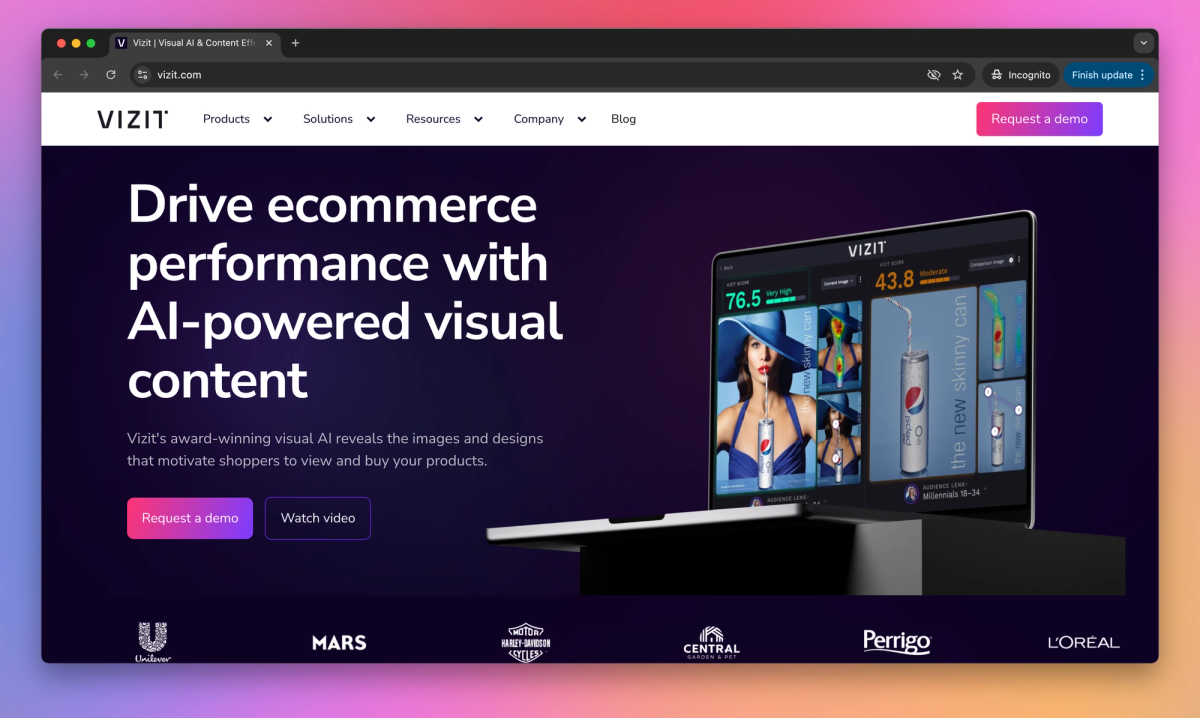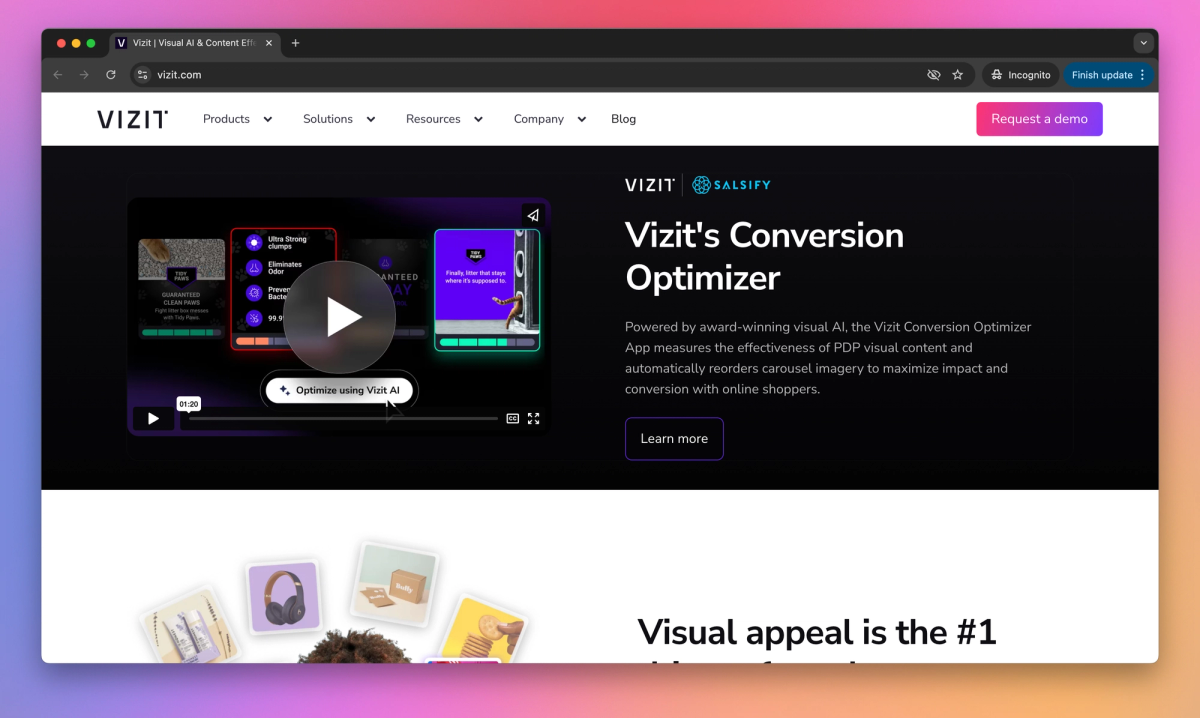

What is Vizit?
Vizit is an AI-powered visual analysis tool for marketers and ecommerce professionals. It predicts consumer preferences for product imagery, allowing companies to optimize their digital shelf presence and increase conversion rates.
What sets Vizit apart?
Vizit stands out by simulating how consumers from over 40 countries view product images, giving brands an edge in global markets. E-commerce teams can use this tool to analyze hundreds of designs quickly, helping them pick visuals that grab shoppers' attention on crowded digital shelves. Compared to traditional focus groups, Vizit lets brands test more concepts in less time and at a lower cost.
Vizit Use Cases
- Optimize ecommerce images
- Analyze visual content effectiveness
- Predict consumer preferences
- Boost digital shelf performance
- Measure brand visual impact
Who uses Vizit?
Features and Benefits
- Vizit's AI technology analyzes images to predict how target audiences will perceive and interact with visual content.
AI-powered visual analysis
- Patented Audience Lenses simulate visual preferences of specific consumer groups based on real-world online behavior.
Custom audience lenses
- Vizit allows brands to compare their visual content effectiveness against competitors in their category.
Competitive benchmarking
- The platform enables quick testing and optimization of product images to improve digital shelf performance.
Rapid image optimization
- Vizit tracks and measures the impact of visual content across digital platforms to drive traffic and conversions.
Visual content effectiveness monitoring
Vizit Pros and Cons
Pros
Uses AI to measure and optimize brand imagery effectiveness
Empowers teams to capture attention and drive sales faster
Generates AI models of consumer visual preferences
Evaluates visual content through target audience perspectives
Cons
Limited user feedback available online
Lack of specific pricing information
Potential learning curve for new users
May require integration with existing workflows


